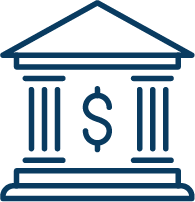Helping You Improve Outcomes for Your Retirement Plan Participants
We work with you to define your goals and tailor a personalized investment plan so you can achieve them.

Who We Are
American Trust Retirement has been collaborating with financial intermediaries to provide successful financial outcomes for almost 50 years. We were built on a dedication to innovation, integrity and a desire to help people achieve a successful financial outcome. Our firm was founded by hard-working, forward-thinking entrepreneurs who truly embody the American spirit.
We don’t dabble in the retirement industry. It’s our core business. It’s who we are. It’s what we do. We enable our business partners to operate as independently as they see fit — not bound to fund families, insurance products or any other type of proprietary products. We remain dedicated to a customized approach because we are here to support your brand and your values, not ours.
As the leading provider of technology-enabled financial solutions, we can do more than just drive the participants’ digital experience, we can also automate workflows and improve the efficiency of your operations. At American Trust Retirement, we’re all in and working hard to expand and grow. Our culture embraces a spirit of support and dedication to helping you achieve your goals.
How Can We Help You?
Contact us today!
Whether you have a question you would like answered or want to share a brilliant idea, we are excited to hear from you.




